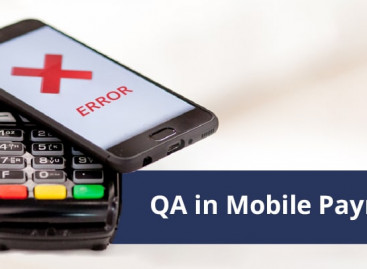- QATestLab Blog >
- QA for Business >
- Cases >
- The Case Of E-Learning App Testing: How To Attract More Learners?
The Case Of E-Learning App Testing: How To Attract More Learners?

Note: the article was updated in September 2020.
The way we can learn today is more flexible and interactive, as never before. And this was made possible by the power of e-learning methods to provide knowledge through the media devices. But while this concept is not new, the idea of testing e-learning applications is barely on the radar screen. That’s why apps have lots of errors, and users stop using them. In this post, we will explain how to care about quality and share one of our cases of e-learning testing.
E-Learning app quality: How to achieve it?
To make an e-learning product release successful, you need one thing – to think about your audience. As a rule, users see a variety of visual and audio content like texts, photos, illustrations, and more. Each of these details equally affects what type of experience the user will get. To make it positive, it is necessary to bring to light all potential errors.
In a nutshell, the testing process for e-learning applications should cover the following checks:
Speed and responsiveness. E-learning products should work equally well under different working load, speed, and traffic intensity. To test whether the application will cope with all the scenarios, QA teams conduct performance testing.
Compatibility with different environments. As a rule, users expect to use an app on different versions (mobile or desktop), platforms (Android, iOS), browsers, etc. But if the application works well in one environment, it doesn’t mean it will work the same way everywhere. That’s why it is essential to conduct compatibility testing.
Text & Visuals. The right path to a bad user impression is presenting text and visual content with errors that make the learning process rather annoying and ineffective than engaging. That’s why it is mandatory to ensure that all pieces of content are visible, clear, and present what they designed to. To the greatest extent, all of those things are checked through user interface testing.
Buttons & Links. Since e-learning is an online way of acquiring new knowledge, every step of it happens through clicking the buttons and taping the links. If those details are broken, work with delays, or lead to the wrong places, you risk losing your customer in seconds. QA specialists have special tools that won’t let even the smallest bug spoil a user’s experience.
Case of e-learning testing by QATestLab
Briefly about the project:
It is the US e-learning startup that produces an interactive mobile application for adult English learners. It consists of mini-games such as meaning matching, word search puzzle, and sorting game. The startup intended to launch the app and required a focus testing by non-native English speakers. It was really important for them to know how the application would be perceived by its target audience.
How do we test:
We started our work on the project by forming a QA team according to the client’s needs. We decided to engage the QA specialists in the target age group and with different levels of English: Beginner, Elementary, Pre-Intermediate, and Intermediate. This way we were close to the target audience and could provide detailed feedback from different perspectives.
With the team fully staffed and excited about a funny e-learning project we began rigorous focus testing. And here we go! Several critical functional bugs were found. The application turned out to behave improperly under some types of Internet connection. Moreover, users’ progress calculations were wrong, and there were some usability and graphical issues.
Having obtained focus testing results, the client decided to request complex independent testing by our team. Testing activities included verification of system logic, positive and negative testing, and a pre-launch one. Thanks to that, all the bugs were fixed, and the product was successfully released. For now, it has over 10000 downloads in the Play Market!
Final words: А stitch in time saves nine!
What if that critical functional bugs wouldn’t have been spotted? Post-release fixes would have taken around 30% of the project budget. Besides, the first impression of the app would have been spoiled. QATestLab team feels proud of the success of our client. We sincerely believe that it will get even more downloads. For now, we continue our productive cooperation and constantly ensure the quality of the project.
Learn more from QATestLab
Related Posts:
- What you should know about testing your E-learning platform
- e-Learning Solutions: Why is testing so important right now?
- Automation Testing for Mobile Apps: Why It’s Essential and Our Key Services
About Article Author
view more articles
has more than 2-year experience in blogging and copywriting, copyediting and proofreading of web content.
View More Articles







No Comments Yet!
You can be the one to start a conversation.